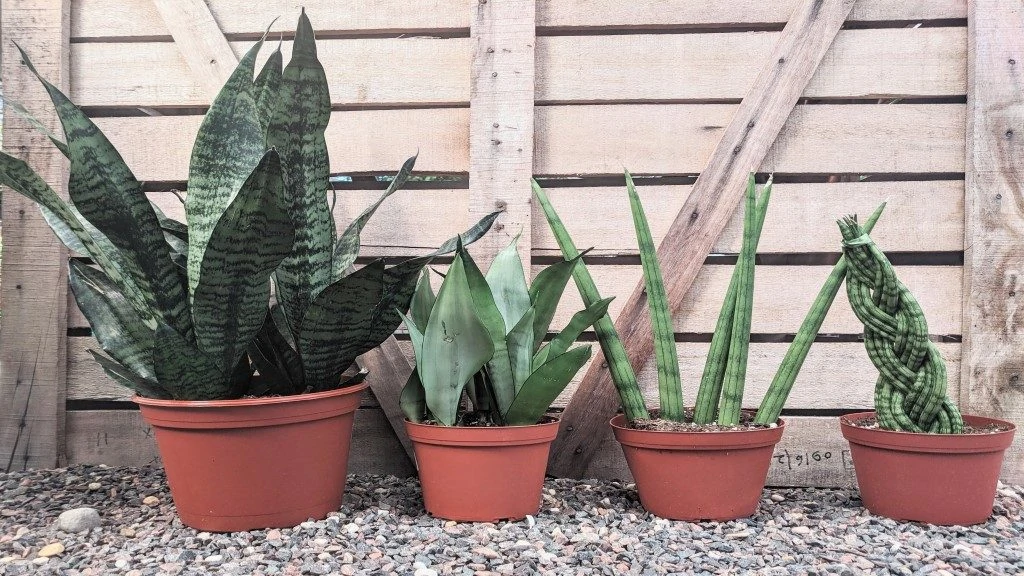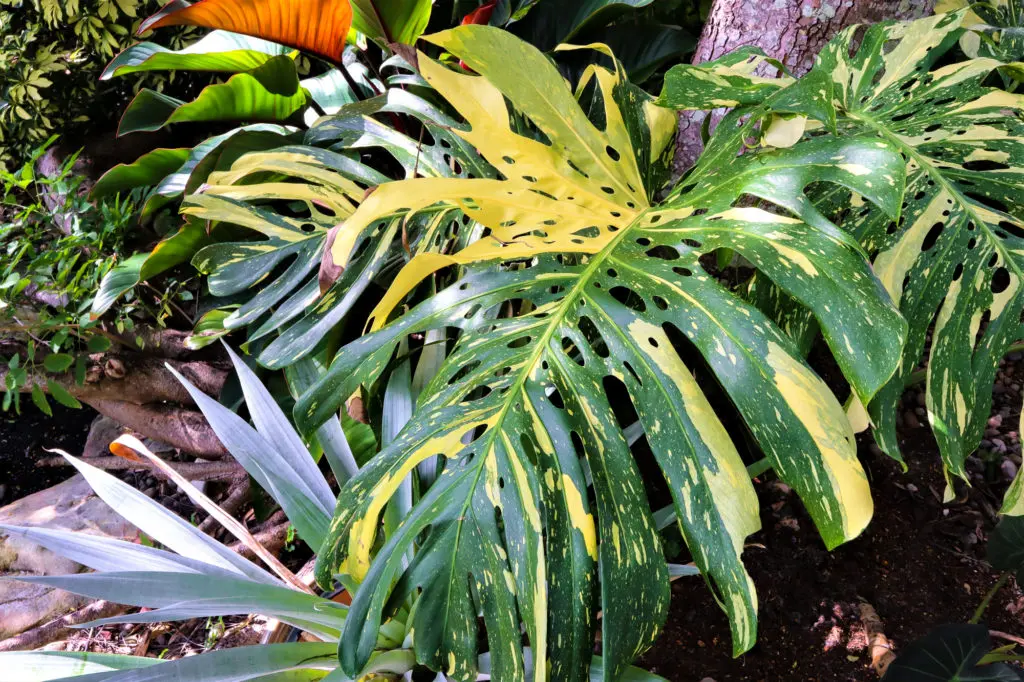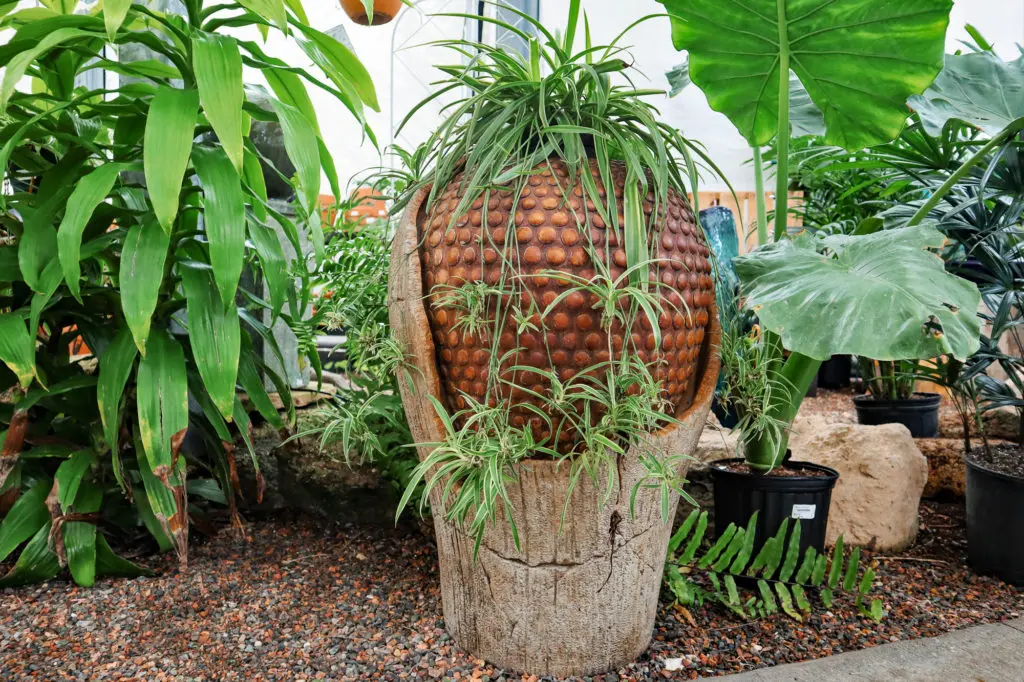by Amanda Rose Newton
Many of us became plant parents during the pandemic. The forced indoor time made us long to bring greenery in. Fast forward to a year later and nurseries and garden centers still can’t handle the demand for popular, rare, and exotic variations of tropical plants to grow indoors.

As the world starts opening and everyone begins to venture back outdoors, make sure your plants stay comfortably situated within their pots. Many of the attributes we enjoy about our indoor plant friends such as low nutrient needs, ability to climb, and ease of propagation is problematic once it gets out into the environment and runs into neighboring plants.
Many houseplants grown today were chosen with the idea of creating year-round greenery and an opportunity to grow novelty tropical climate plants, no matter the geographic location.
With Florida’s subtropical temperatures and high humidity, many of these beauties that would die if planted outdoors other places will thrive here. While not all plants are going to completely overtake your yard and houses like kudzu or privet, there are several that can alter the ecosystem and displace native species.
The following list gives ten plants that you should never allow to make their way into the landscape.
Houseplants that can be invasive outside:
Snake Plant (Dracaena trifasciata)
Coming in numerous colors, shapes, and sizes snake plants (a.k.a mother-in-law’s tongue) have enjoyed a resurgence in popularity. It doesn’t hurt that it also consistently tops the “hardest houseplants to kill” list, ideal for everyone claiming a black thumb.

However, their good deeds tend to stop at the front door. Once planted in the ground, they are able to easily propagate through their underground stems or rhizomes. Before you know it, you will have a backyard full of snake plants! They are also notorious for sneaking under fences, meaning you might end up giving your neighbor a gift they didn’t ask for.
Pothos (Epipremnum aureum)
Check out any pianophile’s Instagram feed and you are sure to find at least one pothos. Like the snake plant, the color variations, ease of care, and affordability make this the ideal choice for sprucing up an indoor space.
You know that vining tendency that looks so good cascading over your cubicle wall? It’s not so attractive once it is unleashed into the landscape. Pothos‘ nickname “Devil’s Ivy” was likely earned through its tendency to take over a canopy in record speed.
Epiphytes (plants that need to latch onto another surface to procure light) are all designed to compete for resources with those around them. To ensure the success of our Florida plants, be sure to keep pothos indoors.
Monstera (Monstera deliciosa)
Monstera, or swiss cheese plant, is one of the hottest selling houseplants currently. Not only can you find it in an array of forms at your local garden center, but its likeness is all over clothing, paintings, and even dinner plates!

Occasionally, you’ll see these beauties planted outdoors and may have noticed their sprawling nature. If not properly controlled, like the pothos, they can truly become “monsters” of the landscape and completely choke out neighboring trees and shrubs.
Asparagus Fern (Asparagus setaceus)
While not a fern nor asparagus, this delicately textured plant has been a staple in adding interest to container gardens for years. When planted outdoors, it becomes problematic for a multitude of reasons. Not only is it quick growing, but it can also climb, propagate easily, and offers up small fruit that birds love to consume. Birds are able to then spread the seeds of the asparagus fern for miles from its origin.
Elephant Ear (Alocasia sp., Xanthomsa sp.)
There are several different species that use the common name of elephant ear but all share large, heart-shaped leaves, and provide a distinctive rich green tropical look hard to achieve with other plants. While they look stylish and part of the scenery here in subtropical Florida, they grow through a corm (some species making taro, the lovely component of many dishes and bubble tea) which means they easily spread.
Even when tugged out of the ground, it is almost impossible to get rid of this one entirely. Unless you are committed to a lifetime of elephant ears, reconsider planting them outdoors.
English Ivy (Hedera helix)
Adding class to any entryway or parlor, English ivy gives an instant cottage garden vibe to the surroundings. English ivy also has the distinction of being on the “most wanted invasive plant” list for decades, keeping company with kudzu and Japanese honeysuckle. It can spread both vertically and horizontally, meaning you may be left with a permanent carpet of English ivy in your backyard if planted outdoors.
Spider Plant (Chorophytum comosum)
Spider plants were the first of many propagation projects for me, and I believe that to be the case for a lot of people.

They literally make spider plant “babies” on runners (above ground stems), so when you buy one plant you are ending up with a lifetime supply! However, those babies cause a lot of chaos out in the yard! Once cut loose, spider plants spread across the ground, displacing turf and being nearly impossible to stay on top of. This one is best confined to its hanging basket, where it can stay out of trouble.
Umbrella Tree or Schefflera (Heptapleurum actinophyllum)
With Dr. Seuss appeal, the umbrella tree makes for a great focal point in any home! Given that it doesn’t immediately strike one as tropical or exotic (just merely whimsical) it seems a natural fit for outdoor use. However, the spikes of pink flowers form berries that birds and other animals adore. Between animals spreading the seeds far and wide and the rest dropping around the tree, you will be stuck pulling up seedlings for years to come.
For an example of what escaped schefflera can do to a natural landscape, take a stroll through Wickham park and count how many you see. Unless you plan on being diligent, reconsider planting this one outdoors and if you must, please leave it in a pot!
Wandering Jew (Tradescantia fluminensis)
Tradescantia is a low-light houseplant staple, and one of the few offering pops of cheery purple/red hues to brighten up a drab space. Like many of these smaller houseplants, once out in the landscape, they like to spread their legs a little bit. They will take on the role of ground cover and effectively prevent you from having any sort of turf or alternative. It also features adventitious roots or stolons, making it hard to stop the spread once it starts.
Fiddle Leaf Fig (Ficus lyrata)
Hands down, the fiddle leaf fig is the top-selling house plant at Rockledge Gardens. If that distinction were not enough, brides have chosen to use the space for their wedding based on pictures featuring the towering indoor fiddle leaf fig in the dressing room!
There is something about the paddle-shaped leaves, dark green foliage, and size that draws everyone to it. It is also notoriously hard to care for, shedding leaves at the slightest change in place, temperature, or touch. While it may seem wise to stick it outdoors in more natural surroundings, the size of this tree and its roots can become problematic for a homeowner, often interfering with other plants and structures.
Houseplants can brighten moods, improve air quality, and offer a sense of purpose which over the past year has been so necessary. To ensure they still invoke such feelings of joy, be sure to keep them inside where they will continue to thrive, putting you both in control.


